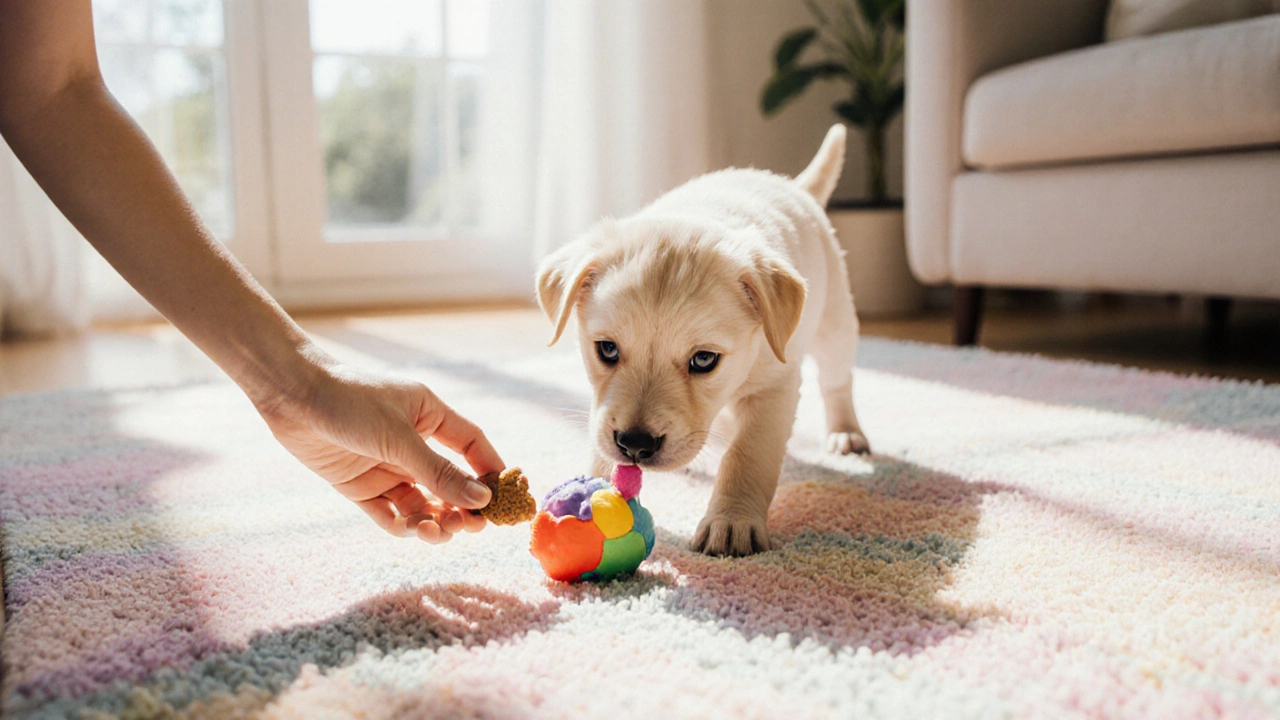Crate Training for Puppies: A Practical Guide
When working with crate training for puppies, a method that uses a safe enclosure to teach young dogs where to rest and relieve themselves. Also known as puppy crate schooling, it builds routine, confidence, and a sense of security for a new pet.
Effective crate training for puppies is closely tied to puppy housebreaking, the process of teaching a puppy to eliminate in the right place. Housebreaking often relies on a consistent schedule, and the crate serves as a physical reminder of when the puppy should hold it. Another key piece is the pee pad, a disposable or washable absorbent pad placed inside or near the crate. While some trainers discourage pads for long‑term use, they can be a useful bridge during night‑time training or for puppies that struggle with bladder control. Finally, the dog crate itself, a sturdy, appropriately sized enclosure that lets a puppy stand, turn around, and lie down comfortably, comes in metal, plastic, or fabric versions, each suited to different living situations.
Why crate training works
The technique works because dogs are den animals by nature. A crate mimics a den, giving the puppy a safe, enclosed space that reduces anxiety. This den‑like environment encourages the puppy to keep the area clean, which is the basis of the semantic triple: "crate training for puppies encompasses housebreaking." When the crate is introduced with a consistent routine, the puppy learns that the crate is not a punishment but a comfortable spot to rest.
One common mistake is picking a crate that’s too large. If the space is too big, the puppy may use one corner as a bathroom and another as a sleeping area, breaking the clean‑crate rule. The right size is typically just a few inches taller and longer than the puppy’s shoulder height. This size rule supports the triple: "Effective crate training requires a properly sized dog crate."
Choosing the right crate type also matters. Metal crates offer durability and good airflow, making them ideal for active puppies that need ventilation. Fabric crates are lightweight and easy to move, perfect for apartments or travel. Each type influences the puppy’s comfort level and the owner’s ability to maintain a consistent training environment.
Night‑time training adds another layer of complexity. Puppies often need to urinate within the first few hours after falling asleep. Placing a pee pad inside the crate can prevent accidents on the floor while the puppy learns to hold longer. However, the goal should be to phase out the pad as the puppy’s bladder capacity improves. This reflects the triple: "Pee pads influence night‑time crate success."
Positive reinforcement is the glue that holds the whole system together. Reward the puppy with praise, treats, or a quick play session each time it enters the crate voluntarily or exits without an accident. Consistency in rewards creates a clear link between the crate and a positive outcome, reinforcing the habit. This aligns with the triple: "Positive reinforcement drives successful puppy housebreaking within a crate."
Scheduling is equally important. Feeding, play, and bathroom breaks should follow a predictable pattern. For example, take the puppy out right after meals, after naps, and before bedtime. A simple schedule helps the puppy’s internal clock sync with the owner’s routine, making the training smoother and faster.
When you combine the right crate, appropriate pee pad use, a solid housebreaking plan, and consistent positive reinforcement, you set the stage for long‑term success. The collection of articles below dives deeper into each of these areas, offering step‑by‑step guides, common pitfalls, and product recommendations that match different lifestyles.
Below you’ll find practical tips, real‑world examples, and answers to frequent questions that help you apply crate training confidently. Whether you’re just bringing a new pup home or refining an existing routine, the posts ahead give you the tools to make crate training a positive, stress‑free experience for both you and your puppy.
Effective Ways to Discipline an 8‑Week‑Old Puppy
Learn practical, gentle ways to discipline an 8‑week‑old puppy, from positive reinforcement to crate training, with step‑by‑step tips and a handy checklist.
